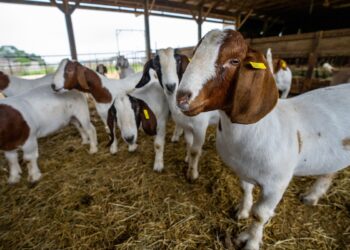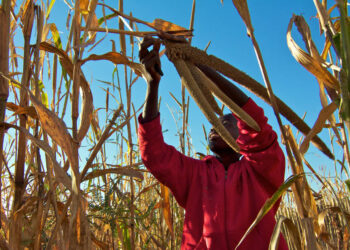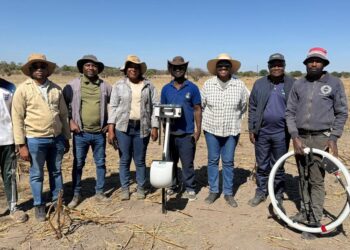
The rainy season is around the corner and most farmers anticipate good rainfall this season. Sufficient rainfall has several benefits that are crucial for farming activities. Firstly, rainfall promotes the regrowth of rangeland pastures, secondly it provides a source of irrigation for crop fields and thirdly, it replenishes underground water sources.
Crop farmers naturally anticipate good yields from each cropping season. However, it is crucial for farmers to understand that the right inputs must be readily available before the start of the cropping season to ensure a successful harvest. Conventionally, soils usually supply all thirteen (13) essential elements required by the variety of crops grown by farmers.
Soil fertility is therefore an important aspect in crop production as it ensures that crops are supplied with crucial elements that increase growth, production, and yield. Crops usually require Macro-Nutrients (elements such as Nitrogen, Phosphorus & Potassium) needed in large quantities daily, while secondary nutrients (elements such as Calcium & Magnesium) are needed in moderate quantities and micro-nutrients (elements such as Boron, Zinc, Sulfur, Iron & Molybdenum) are needed in smaller quantities to perform other specific functions. Fertilizers are key inputs that crop farmers utilize to ensure that crops receiving adequate amounts of each essential nutrient.
Fertilizers are any materials (organic or synthetic) that are incorporated into the soil to supply nutrients that crops require for growth. However, to ensure effectiveness, it is important to ensure that fertilizers are applied correctly. There are many ways in which fertilizers can be applied and it is important for farmers to understand each method. Firstly, fertilizer can be applied using the basal application method.
This method requires a farmer to apply fertilizer by distributing or spreading it over the crop field and working it into the soil before any planting is done. This method is the least likely to cause plant damage and is best for home gardens. Secondly, the top-dressing application is the distribution of fertilizer on to a field containing a growing crop and is used mainly for soluble fertilizers such as nitrate, which are easily washed into the soil and quickly available to the plant.
When using this method, it is advisable to do a split application during the growing season to give an extra shot of nutrients when needed by taking into consideration the different nutritional requirements of crops at different stages of growth. Sideband or row placement application is a third method of applying fertilizer. It usually involves placing the fertilizer in the soil at a slight distance from the seed or seedling, often 5to 8cm to one side and 3 to 5cm below the seed or plant.
In this way the fertilizer is near enough to be used by the plant but not close enough to injure it. Lastly, fertigation is another method that a farmer can use to apply fertilizer to the soil. Usually, this method is only compatible with water soluble fertilizers and it is usually incorporated in the main water tanks that are used to supply water to the crop fields or gardens.
In conclusion, when applying fertilizer, it is recommended that a farmer understands the available nutrient reserves in the soil by testing the soil and determining how much fertilizer is to be applied to avoid over and under fertilization of the soil as it may harm crops.
• Hanks Saisai, Technical Advisor: Crops & Poultry at the Agribank











